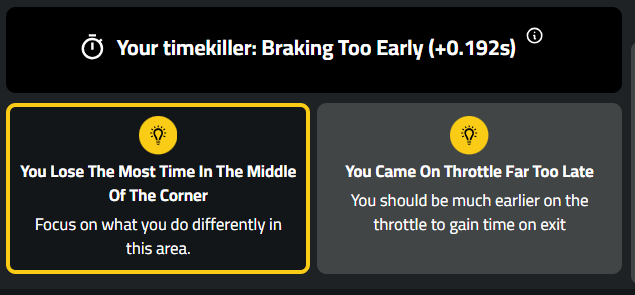McLaren 720s EVO GT3 Zandvoort HYMO Hot Lap Analysis
Let’s take a look at this hot lap of Zandvoort in the McLaren 720s EVO GT3 driven by HYMO.
The Track
The Zandvoort Circuit, nestled in the dunes near the North Sea coast in the Netherlands, is known for its rich history in motorsports. Hosting the Dutch Grand Prix, the track is famed for its challenging layout, featuring fast, sweeping corners and notable elevation changes. The circuit's blend of high-speed sections and technical turns, such as the Tarzan corner and the high-speed Scheivlak corner, offers a unique and demanding driving experience. Zandvoort's coastal location also adds variable weather conditions into the mix, further challenging drivers and teams.
The HYMO setup used in this hot lap video is available for you to try HERE.
Analysis
The analysis below uses the Track Titan platform to compare a HYMO reference hotlap to one of the Track Titan community drivers at Turn 10. The community driver enters the corner from a tighter line than the blue reference driver. The consequences of this are also evident in both the minimum speed and diff to reference graphs. Despite the fact that the community driver is able to brake later in a straighter line, the compressed radius they create means they have to delay their apex point and slow down more to rotate the car. This means they get on the power later and get going from a slower speed. Overall this costs them on corner exit compared to the reference lap by around 0.05s.
.png)
You can analyse every other turn in the Track Titan platform; see reference lap here.
You can also take it to the next level and compare it against your own driving, just sign up to Track Titan for FREE today here.
Hot Laps Top Tips
In racing, the "V-line" refers to a specific technique used for navigating corners. It involves entering the corner wide, braking later and turning sharply towards the apex (the innermost point of the corner), and then exiting the corner wide again. This approach is typically used in cars that don't rely heavily on minimum speed for downforce and allows for a faster exit speed compared to a more traditional, rounded line. The "V-line" is particularly effective in corners leading onto long straights, as the increased exit speed translates into higher speeds on the straight. In an F1 car for example, drivers may favour the traditional line to maintain grip through downforce but a TG3 car might get away with the V-line
Don't know where you are losing time? Use the HYMO hotlap to find out.
To see full lap analysis of your own driving, you can sign up to Track Titan for FREE today here.


.png)























